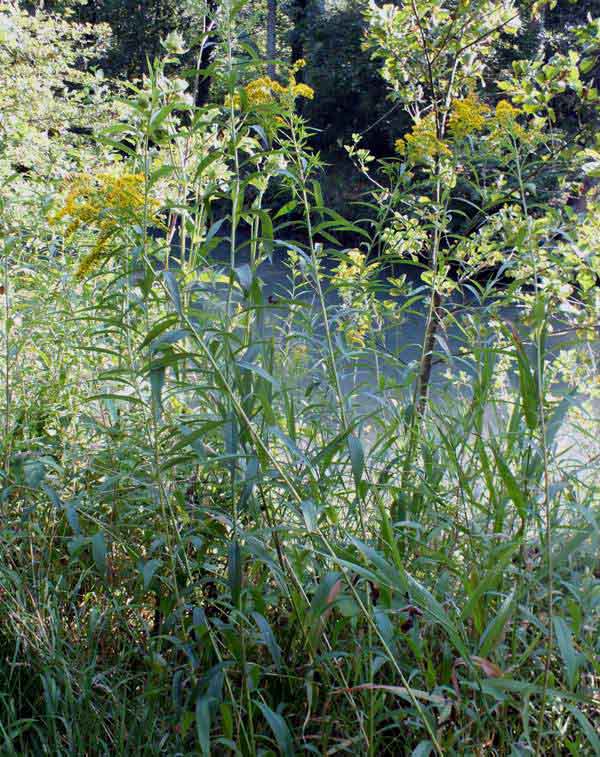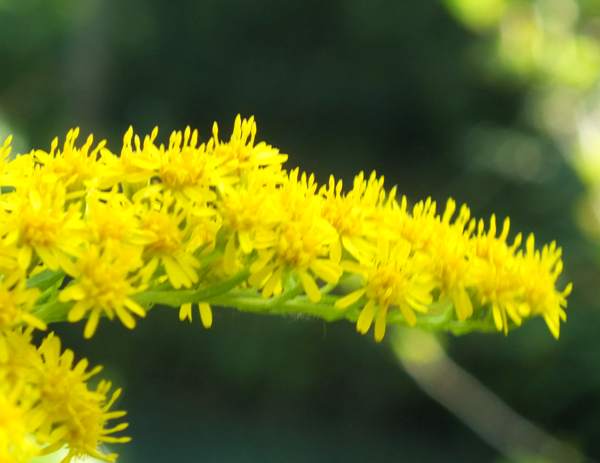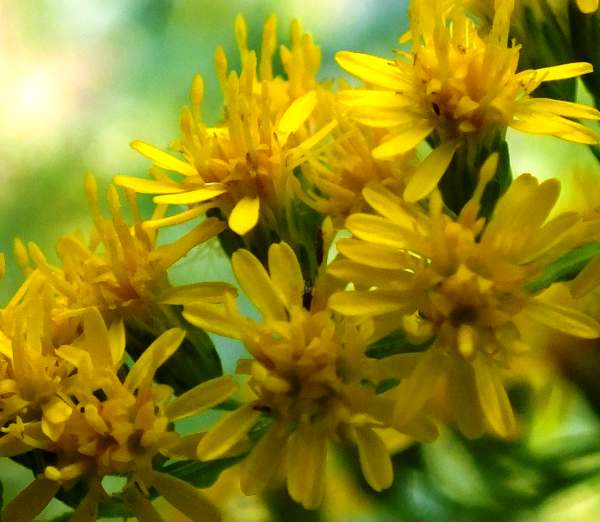Solidago virgaurea - Goldenrod
Phylum: Magnoliophyta - Class: Equisetopsida - Order: Asterales - Family: Asteraceae

Description
Growing to typically 0.5m and occasionally twice that height, this perennial plant rarely branches. Its serrated leaves, which are alternate up the stem, are sessile (stalkless) except for a basal rosette. The yellow compound fowers are between 10 and 25mm across.

Distribution
Goldenrod (sometimes written as two words Golden Rod) is common and widespread throughout Britain and Ireland, most particularly in western parts. Its range extends across most of mainland Europe, North Sfrica and much of Asia.

Habitat
This late-flowering member of the daisy family is very common both in lowland and upland regions, especially on woodland edges, in rocky grassland areas and occasionally on clifftops.
Blooming times
In Britain and Ireland, Goldenrod can be seen in flower from July until September.
Uses
In the past, this plant was used to treat wounds, and apparently it fell from favour not because it was no long considered efficacious in this respect but because it was discovered to be more common than previously thought - a case of familiarity breeding contempt!
We found these specimens in the Teifi Valley near Llandysul in west Wales.
Please Help Us: If you have found this information interesting and useful, please consider helping to keep First Nature online by making a small donation towards the web hosting and internet costs.
Any donations over and above the essential running costs will help support the conservation work of Plantlife, the Rivers Trust and charitable botanic gardens - as do author royalties and publisher proceeds from books by Pat and Sue.



